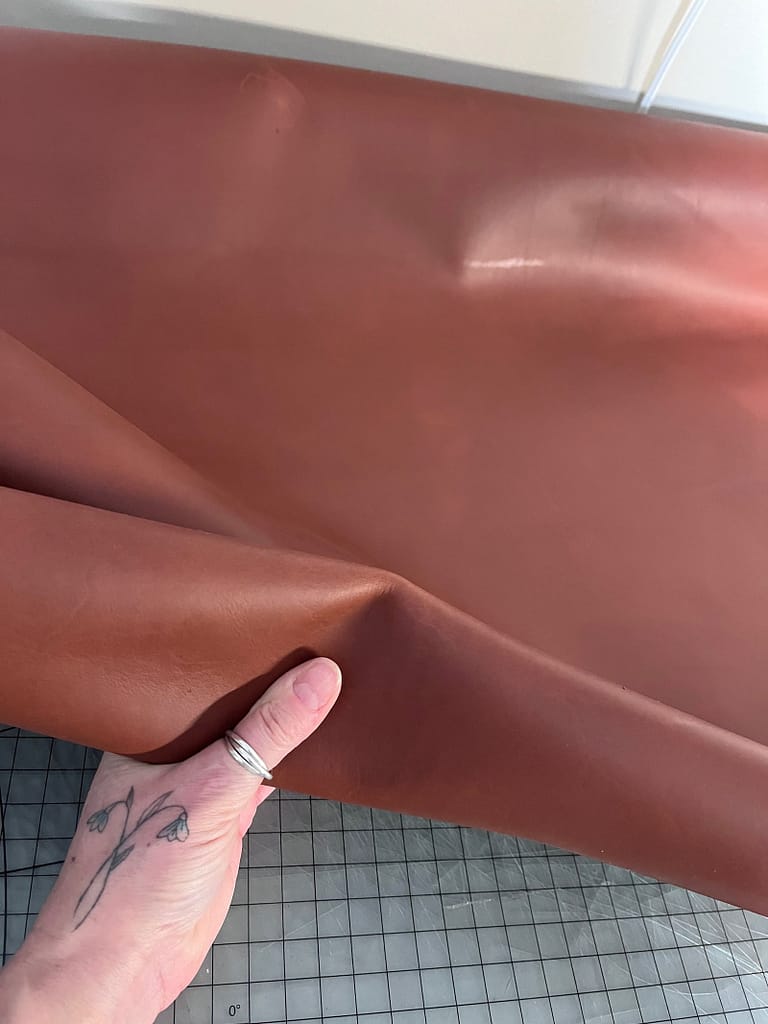What you need to know when selecting leather hides are the various factors that play a role in determining the quality and suitability for your project.
- Quality: I look for leather that is even in texture, with a consistent color and minimal blemishes. As it is a natural material, it’s normal to have slight imperfections throughout the leather. Sometimes I select a hide with interesting imperfections that I can incorporate into a project – for example a brand or scar.
- Thickness: I consider the thickness of the leather based on the project I am working on. Wallets and laptop bags are usually 5oz whereas purses are 3-4oz.
- Type of leather: Different types of leather have different properties and uses. For example, I mostly use vegetable tanned leather for wallets, and chrome tanned leather for bags. Vegetable tanned is generally stiffer which gives the wallet its structure, and chrome tanned is more pliable – which is suitable for bags.
- Finish: Leather can have a variety of finishes, including smooth, textured, and natural. The project will determine which look and feel I want. I love the natural finish for wallets as they develop so much character and patina with use. Any natural marks will become more prominent as the patina develops.
- Size: I usually purchase a half side of leather as it is more cost effective than buying smaller pieces. A half side is usually about 20 – 25 sq ft. If I’m purchasing a hide with hair-on, they are sold in full hides that are approx. 50 sq ft.
- Price: Leather can vary significantly in price, depending on the quality and type. Vegetable tanned leather is more expensive since it takes months to tan, as opposed to chrome tanned that can be tanned in a matter of days.
- Source: I ensure the leather is sourced from reputable tanneries that use environmentally-friendly methods and is sourced from sustainable sources. All hides I purchase are from North or South America and are a byproduct of the meat industry.
To sum it up, what you need to know when selecting leather is to focus on picking good quality pieces that are the right thickness for your project. Choose leather with a smooth texture and color. Depending on what you’re making, you might want a stiff or flexible leather. Also think about how you want the leather to look and feel when it’s finished. Buying leather in big pieces saves money, and try to make sure it comes from trustworthy sources that care about the environment.

